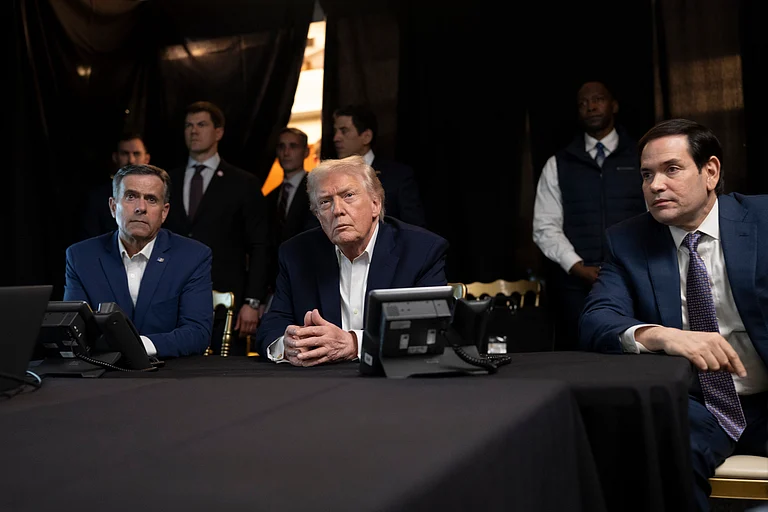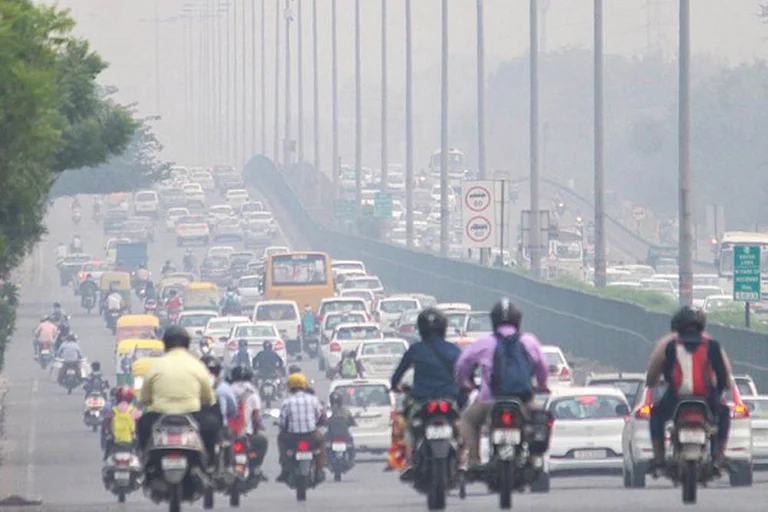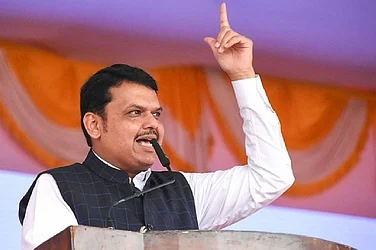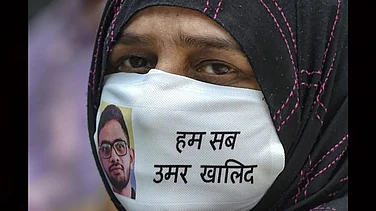There was confusion everywhere. Rumours were rife and people in Kashmir were already preparing for the “major change”. It was an unprecedented situation.
Lapses in normalcy are normal in Kashmir. But this time, no one knew what exactly was happening: some believed the government was bracing for the death of a separatist leader, some were saying there was going to be an attack on Pakistan, there was also talk about war with China, while some claimed that Article 370 was to be scrapped.
As a reporter working in Kashmir at the time, I too was trying to keep a tab on the fast-changing political landscape of Kashmir. I remember meeting a senior officer in this regard and asking him about all the rumours. “Well, I have no information about what exactly is going to happen. I am clueless too. Every direction is coming straight from Delhi. I am just doing whatever I am asked to do,” said the official.
On an ominous note, however, he admitted that bringing in contingents of security forces meant “something big”.
“Only Home Minister Amit Shah and higher-ups know what exactly is going to happen,” he told me as I left his brightly lit office in Srinagar.
On that day National Conference president Farooq Abdullah and his son Omar Abdullah and MP Hasnain Masoodi had flown to Delhi to meet Prime Minister Narendra Modi. The senior Abdullah earlier had been summoned by the Enforcement Directorate (ED) in connection to the Jammu and Kashmir Cricket scam.
In Kashmir, word on the street said that “the Abdullahs had secured some deal”. I remember Shah Faesal, who was a politician then, coming up with a statement and questioning why the duo had met PM Narendra Modi when there were calls for mainstream unification in the state.
Next day, it was Mehbooba Mufti, the former Chief Minister, who came up with a statement amid the confusion. She cautioned New Delhi against tinkering with the state’s special status.
I remember a meeting of JK’s politicians at the posh Gupkar road. In the meeting, one of the politicians, who has been a lawyer, came with a big file in his hands. “Article 370 cannot be abrogated. It is a law,” he sounded confident.
In the milieu, it was the state’s then Governor Satya Pal Malik, who would say that nothing is going to happen in J&K. He had been reiterating it for the last many days.
On 4 August 2019, a source informed me that Article 370 is going to be abrogated. “There is going to be a clampdown on street mobilizers. Many political leaders have been rounded up already,” he informed me.
Next day, it was Home Minister Shah who formally announced the “historic decision” for “prosperity” of Kashmir.
Shah termed Article 370 as a “major hurdle” on the prosperity of Kashmir. It was on the day same day that a communication gag was imposed in Kashmir. With no connectivity, Kashmir went incommunicado.
For journalists, Kashmir had suddenly become a “green pasture” for stories. Numerous news organisations sent their best teams to cover the crisis, hoping to get a big scoop. But once in Kashmir, the reporters and news teams struggled to send out any stories at all. While some digital organisations with their own OB vans managed to go live, without the internet or telephone, the rest were in limbo.
For the first few weeks, many of my colleagues sent their dispatches, videos and photographs through pen drives via the airport. It was hectic but the passion of my fellow scribes was remarkable. From news gathering which itself had become a daunting task to reaching the airport in time for dispatching the content through pen drives to the respective newsrooms.
Some of my colleagues from print media sent their dispatches through OB vans to their respective bureaus. Every colleague of mine, especially J&K correspondents with national dallies was doing their best to report what was happening in Kashmir. Some were trying to get in touch with their bosses through a lone telephone facility that had been opened up for use at Srinagar’s Deputy Commissioner Office in those days.
I recall how most of my friends celebrated that Eid in despair, away from their families, some because they were stuck outside home and could not return due to the blockade and confusion, and others, fellow journalists, who couldn't return home because they were on the field, risking their lives to record and document all that was happening.
After some weeks, the government opened a facility at a hotel in Srinagar. It was named "Media Centre":. It was touted as a facilitation centre for penmen and lensmen in a controlled environment.
Journalists hoped that it would ease their daily hassle of sending stories to their respective bureaus. But many had apprehensions that the government opened the facility with the intention of tabs on local press.
I remember my first tryst with the media centre. The facility had a few desktops, with a stage for officials who would come with daily reports to the place. It was massive in size but too little for the swarm of journalists.
I remember how many of my colleagues would jostle to send their stories every evening. Many would complain that there is no privacy. It was a cramped place and everyone was working on some story, some breaking report or other.
“It is a showpiece,” I remember one of my colleagues saying.
In the commotion, however, the fear of repression was palpable. “When two former CMs and a sitting Parliamentarian have been arrested, anything can happen,” an editor of a local magazine answered when one of my friends asked him why local press has not been critical of the happenings in Kashmir. There were rumours about a "list" of scribes who would soon be arrested. There was a talk about who would be arrested soon, and who would be next and the next after that. I always wondered: Why? Just because we were doing our job?
Years back, I had read somewhere that journalists are like mirrors, and they reflect whatever they see. Then why are some journalists singled out over others? I once asked a friend, who has been in the profession for over a decade now: “You are caught in between two nuclear giants and expect things are going to be hunky-dory?” he had said as we had tea at his home.
The government wasn't the only concern. It was said that many journalists were on the radar of militants as well. Journalism in Kashmir has always been a double-edged sword. It earns you foes rather than friends. Particularly, after the assassination of Kashmiri editor Shujaat Bukhari, things seem scary.
It started first with two of my colleagues Basharaat Masood and Hakeem Irfan were called by the police for their stories. I remember sitting with my friends that day, hoping the two would be left unharmed. They were released in the evening.
Some months later, another colleague, Peerzada Ashiq was called by the police for one of his stories. Ashiq was working with The Hindu newspaper and had been coming up with some brilliant stories from Kashmir. I remember Ashiq telling me how he sent a diary to his New Delhi office after he was unable to send his reports in the initial days of the communication gag.
In south Kashmir, I recall two journalists, Irfan Amin Malik and Qazi Sibli were detained. Things got worse. Two of my colleagues Azaan Javaid and Anees Zargar were beaten up by policemen outside a Srinagar college while covering a protest.
In the subsequent months many journalists have been summoned, detained or arrested by the police, simply for reporting from Kashmir. Photojournalist Masrat Zehra was summoned by the police and Sajad Gul, who was working from the remote Bandipora region, was also been put behind bars. I remember a colleague Umer Mukhtar being detained. Later, intervention by a few senior journalists secured his release. Fahad Shah, an editor of an online platform reporting expressly on Kashmiri issues, continues to be in jail.
I also remember how one of my colleague Aaqib Javed was summoned for his stories.
Recently, the NIA raided the homes and offices of senior journalists including Hilal Mir, Parvaiz Bukhari, Shah Abbas, and Azhar Qadri. Their equipment including mobile phones and laptops were seized. Gowhar Geelani, a journalist working with DW has been summoned many times. Recently, photojournalist Shahid Tantray was also summoned.
Some weeks back photojournalist Sanna Irshad Mattoo was barred from boarding a flight to receive her Pulitzer award for her grasping photos from Kashmir. Another Kashmiri journalist, Aakash Hasan, was disallowed from visiting Sri Lanka.
A free and independent press is considered the fourth pillar of democracy. However, in Kashmir news can often become “nuisance”. Post 5 August 2019, there has been a sense of self-censorship in Kashmir. Like a self-imposed communication blockade. But even if the stories are not being told yet, they are all being recorded. The journalists in Kashmir are keeping tabs.


























